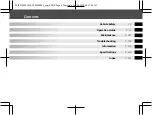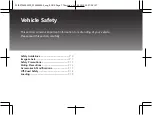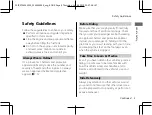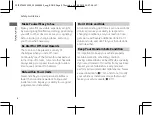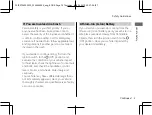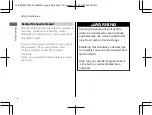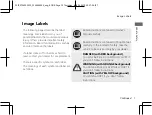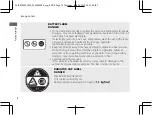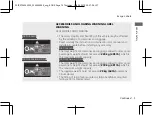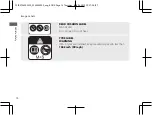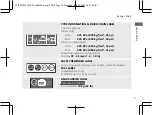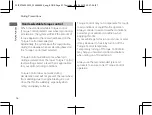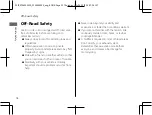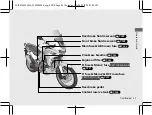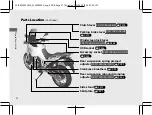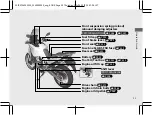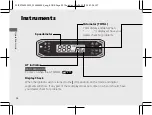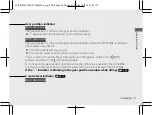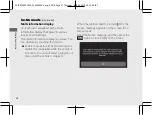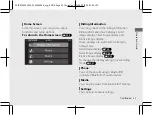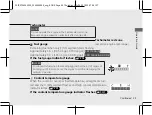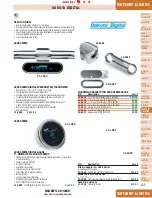
●
Exercise caution on low traction surfaces.
u
The tyres slip more easily on such
surfaces and braking distances are
longer.
●
Avoid continuous braking.
u
Repeated braking, such as when
descending long, steep slopes can
seriously overheat the brakes, reducing
their effectiveness. Use engine braking
with intermittent use of the brakes to
reduce speed.
●
For full braking effectiveness, operate both
the front and rear brakes together.
#
Anti-lock Brake System (ABS)
This model is equipped with an Anti-lock Brake
System (ABS) designed to help prevent the
brakes from locking up during hard braking.
The ABS functions with information provided by
the IMU (Inertia Measurement Unit).
●
ABS does not reduce braking distance. In
certain circumstances, ABS may result in a
longer stopping distance.
●
ABS does not function at speeds below 10
km/h (6 mph).
●
The brake lever and pedal may recoil slightly
when applying the brakes. This is normal.
●
Always use the recommended front/rear
tyres and sprockets to ensure correct ABS
operation.
#
Engine Braking
Engine braking helps slow your vehicle down
when you release the throttle. For further
slowing action, downshift to a lower gear. Use
engine braking with intermittent use of the
brakes to reduce speed when descending long,
steep slopes.
#
Wet or Rainy Conditions
Road surfaces are slippery when wet, and wet
brakes further reduce braking efficiency.
Exercise extra caution when braking in wet
conditions.
If the brakes get wet, apply the brakes while
riding at low speed to help them dry.
20190704203539_32MKS6000_eng_BOOK Page 19 Thursday, July 04 2019 20:57:26 JST
Riding Precautions
Vehicle Safety
14


